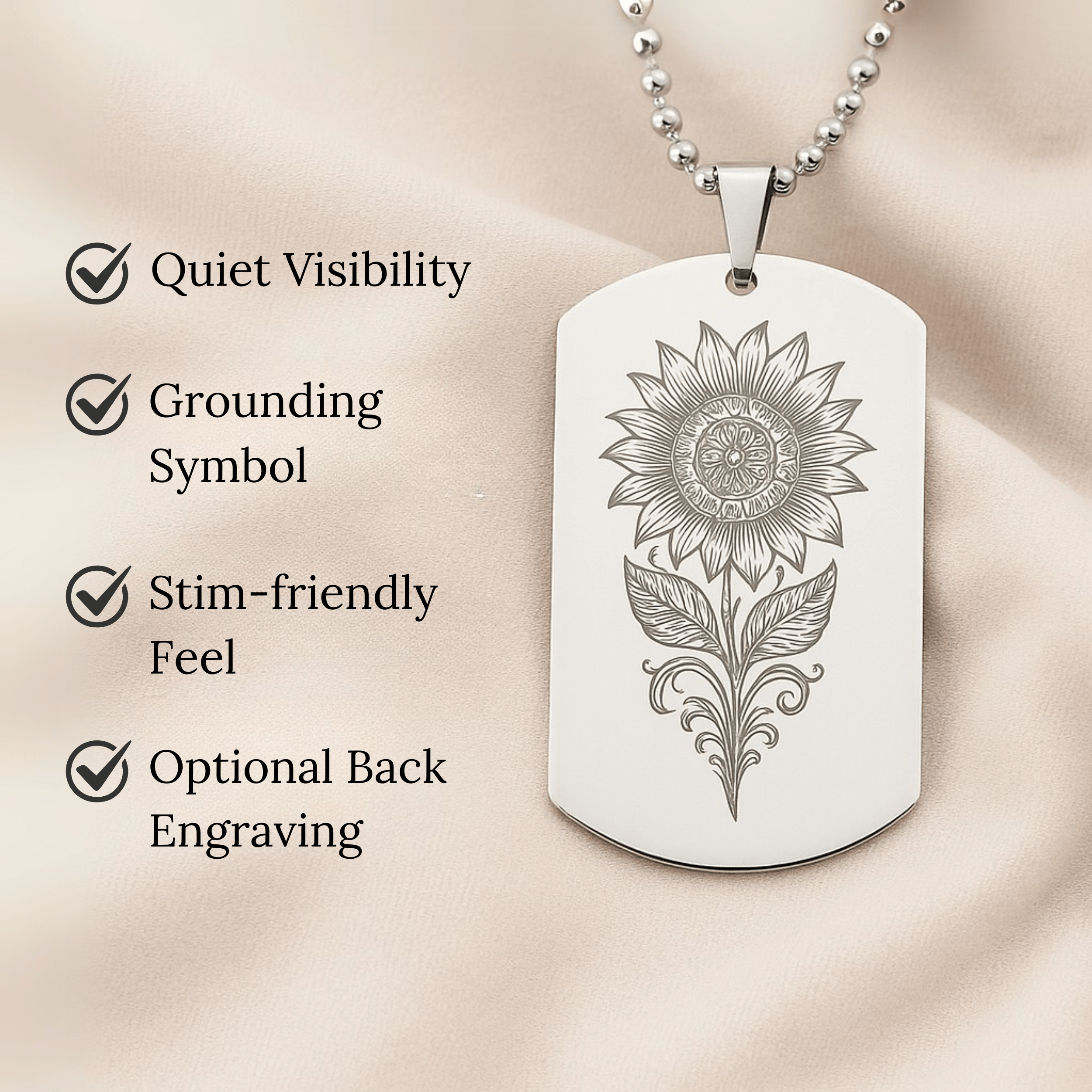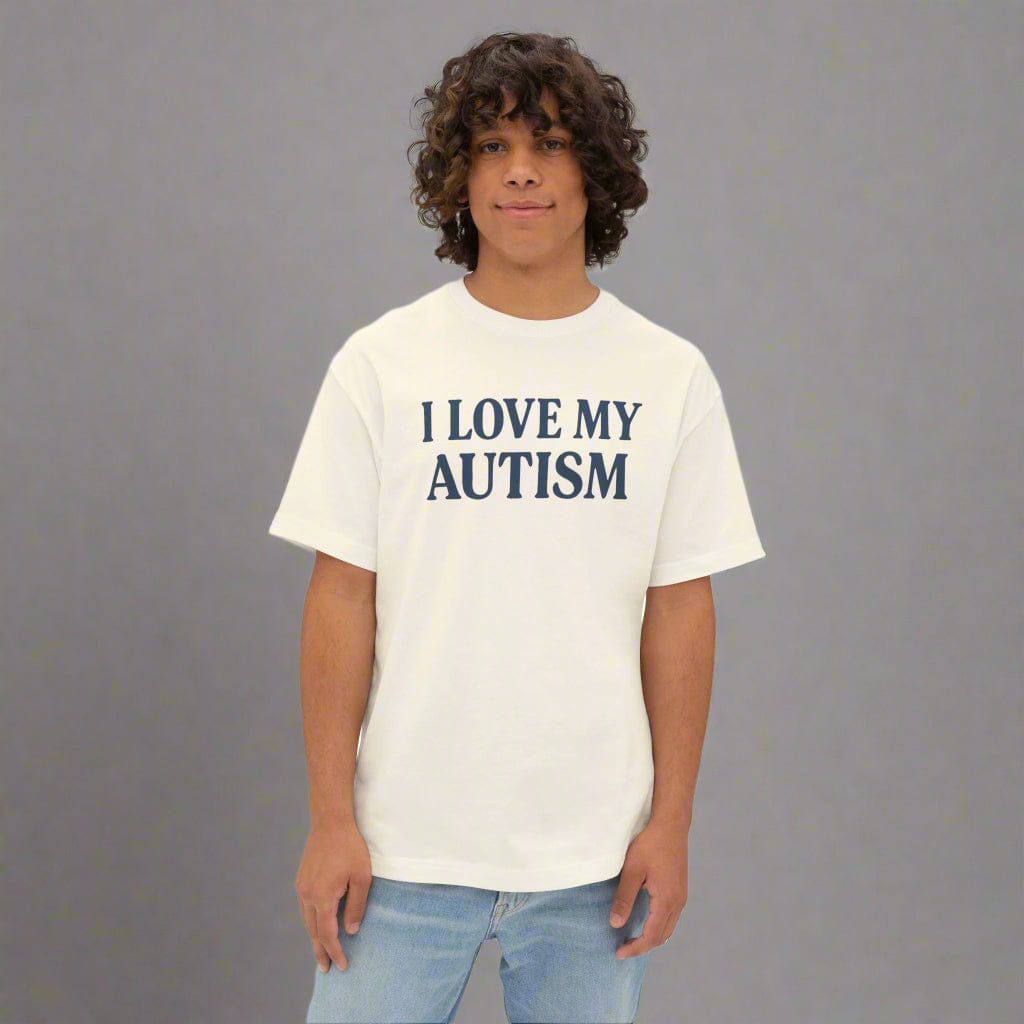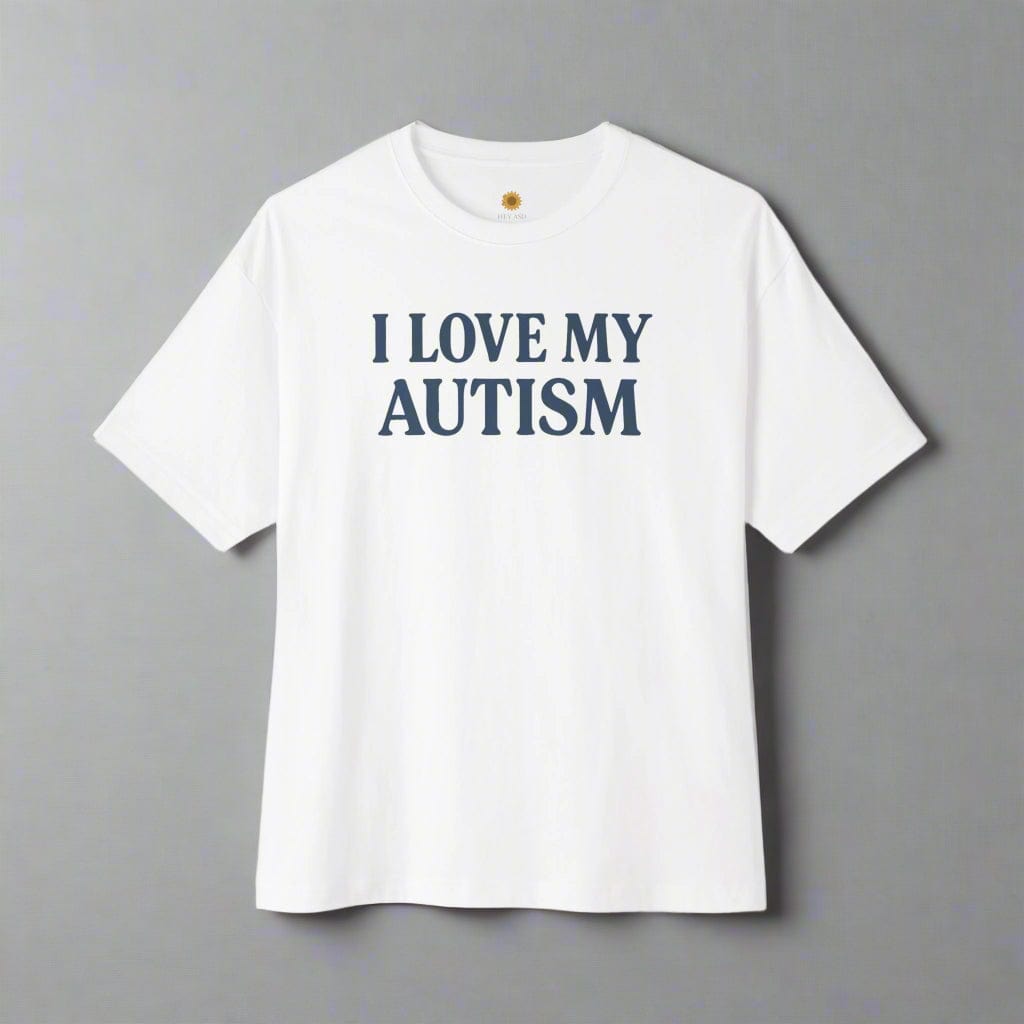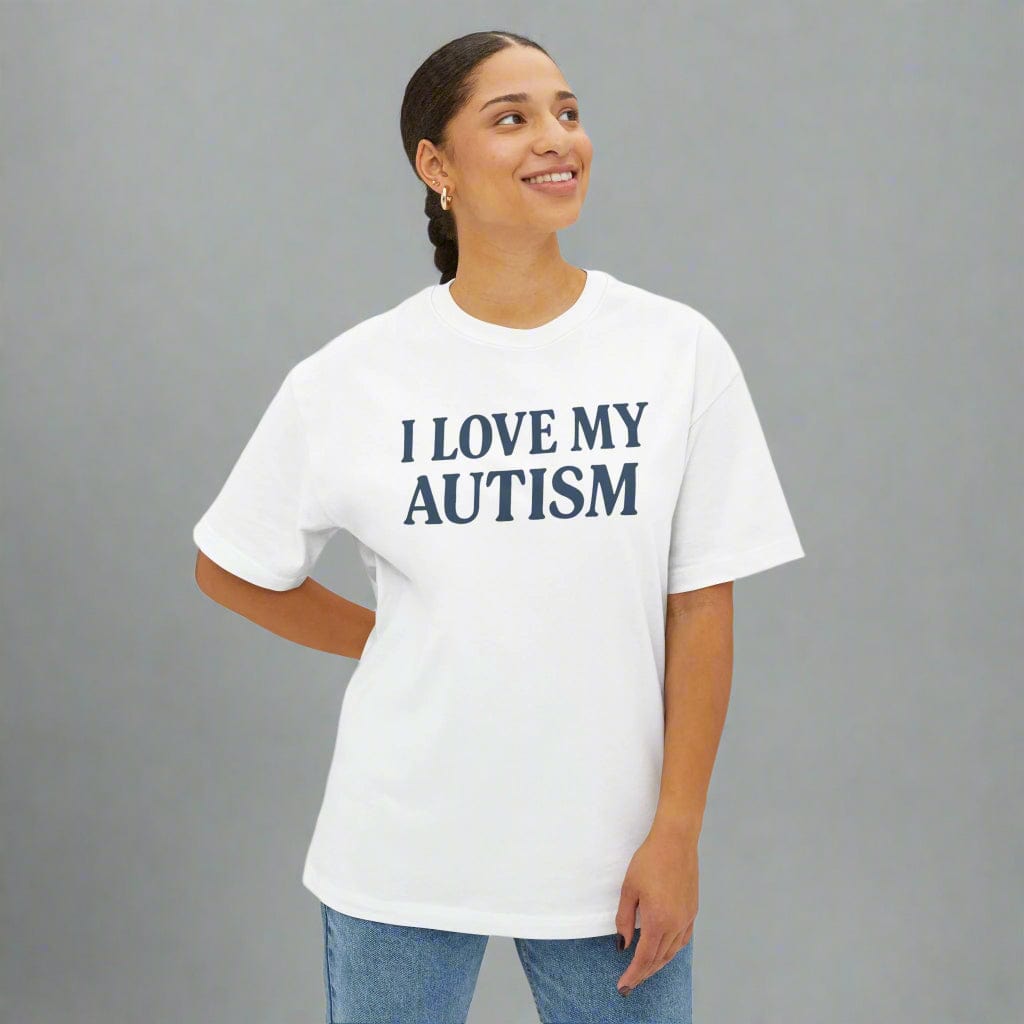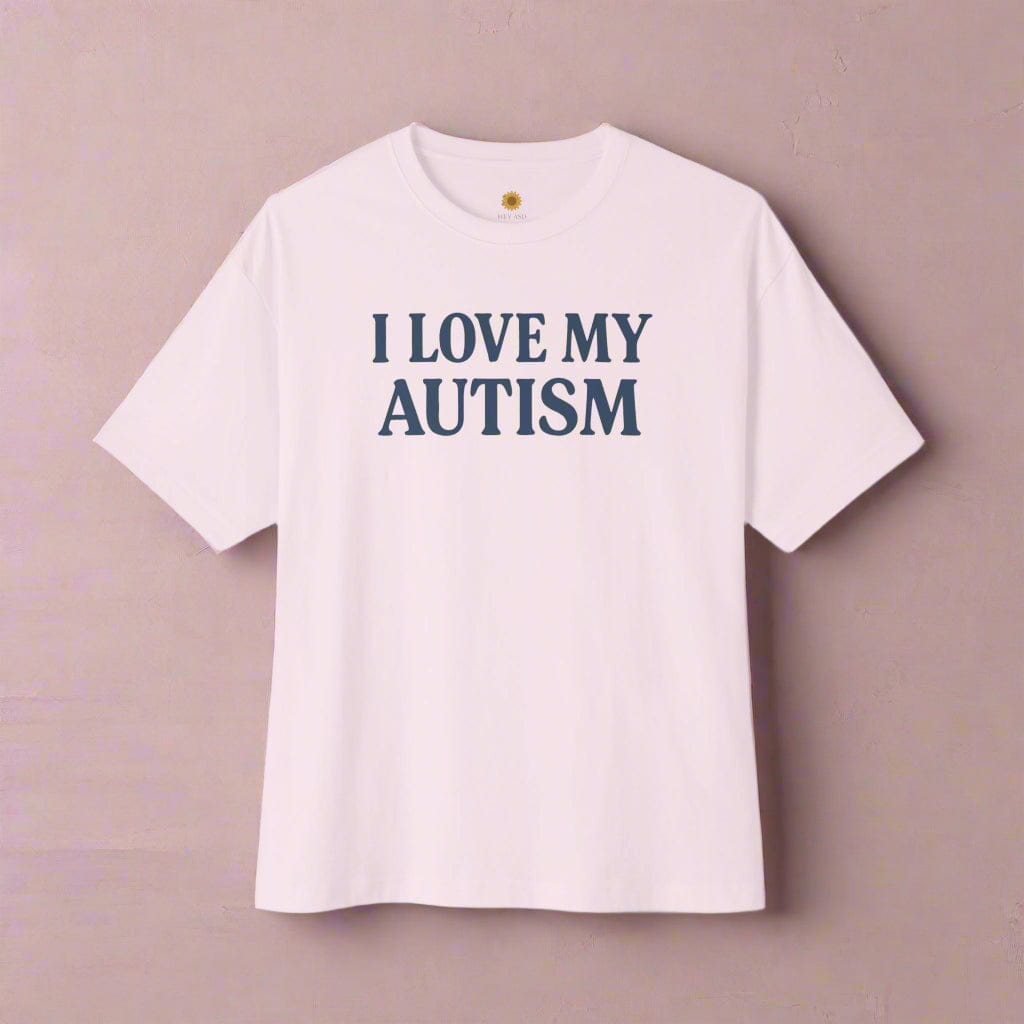Autism Assessments for Adults: Finding Clarity, Validation, and Self-Understanding

Written by the HeyASD Editorial Team
For many adults, the realization that they might be autistic comes not from a sudden moment, but from years of quiet wondering — noticing patterns, sensitivities, and differences that finally begin to make sense. An autism assessment can be the bridge between uncertainty and understanding, offering both clarity and compassion.
Seeking an assessment is not about labeling yourself; it’s about listening to yourself. It’s about honouring the way your mind works, validating your lived experience, and finding language for things you’ve always felt but couldn’t quite explain. This guide walks you through what to expect from an adult autism assessment — from early self-reflection to professional evaluation — and the emotional journey that often accompanies it.
Whether you’re taking your first steps toward self-discovery or supporting someone else through theirs, know that this process is an act of self-care. Understanding your neurotype is the beginning of living more fully, gently, and authentically as you are.
“For years, I thought I was just too sensitive, too intense, too much. Getting assessed didn’t change who I am — it helped me see that there was never anything wrong with me in the first place. It gave me language for what I’d always known deep down: my brain just works differently, and that’s okay.”
Understanding Autism Assessment for Adults
An autism assessment for adults is a comprehensive evaluation conducted by a qualified professional to determine if you meet the diagnostic criteria for autism spectrum disorder. It's not just a single test but a detailed look at your life experiences, social communication styles, and developmental history.
The goal of a formal diagnosis is to provide you with a framework for understanding yourself. It can validate your experiences, explain lifelong patterns, and open the door to tailored support and a stronger sense of identity. The sections below will explore why adults seek assessments and what to expect.
Why Adults Seek Autism Assessments
Adults pursue a diagnosis of autism for many personal reasons. For some, it’s the culmination of years of feeling different without knowing why. A lifetime of social challenges, sensory sensitivities, or feeling like you have to perform in social situations can lead to a search for answers.
You might be seeking an assessment because other diagnoses, like anxiety or depression, don't seem to capture your full experience. Many autistic adults find that understanding their neurotype is the key to improving their overall quality of life. It provides a new lens through which to view past struggles and build a more authentic future.
Ultimately, the decision to seek a formal diagnosis is deeply personal. It is often driven by a need for self-understanding and validation. Knowing you are autistic can be the first step toward self-acceptance and finding a community that truly understands you.
Common Signs to Consider an Assessment
Recognizing potential autistic traits in yourself can be an important and empowering first step toward greater self-understanding. It's important to remember that autism exists on a spectrum and presents differently in each individual. While the experiences listed—such as challenges with social communication, deep absorption in specific interests, a preference for routines, sensory sensitivities, and engaging in repetitive behaviors—are common among autistic adults, they are not exclusive to autism nor do they form a rigid checklist.
Adults who consider seeking an assessment often report longstanding feelings of being "different" or out of sync with social expectations. Many describe masking or camouflaging their true selves in social situations to fit in, which can be mentally exhausting over time. Some may have been misdiagnosed with anxiety, depression, or other conditions before recognizing underlying autistic traits.
If you see yourself reflected in these patterns, using self-assessment tools such as the Autism Spectrum Quotient (AQ) or other adult-focused checklists can help clarify your thoughts and prepare you for conversations with professionals. These tools are not diagnostic but can provide useful insights and language for describing your experiences.
Pursuing a formal evaluation may bring benefits such as access to support services, workplace accommodations, and a sense of validation about your lived experiences. It also opens avenues for connecting with neurodiverse communities where shared understanding and acceptance can be found.
Ultimately, whether or not you seek a diagnosis is a personal choice. Recognizing these traits is already a meaningful part of self-discovery and advocacy. Remember that autism is simply one aspect of identity—your strengths, preferences, and challenges all contribute to the unique way you experience the world.
Misconceptions About Adult Autism Diagnosis
There are many myths surrounding adult autism diagnosis. A common misconception is that autism is only diagnosed in childhood. However, many autistic people, especially women and those who mask their traits, are not identified until adulthood. A late diagnosis is valid and increasingly common.
Another misunderstanding is that a diagnosis is a negative label. For many, a formal diagnosis is the opposite—it is liberating. It’s not a medical diagnosis of an illness but an explanation of your neurotype. It can reframe a lifetime of challenges as differences, not deficits, and help you understand your unique strengths.
Finally, some believe you cannot be autistic if you have a job, a family, or are successful. This is untrue. Many autistic adults develop complex coping strategies to navigate a world not built for them. Success in some areas of life does not invalidate the struggles you may face in others.
Lived Experience Perspectives on Self-Understanding
Hearing from other late-diagnosed autistic adults can be incredibly validating. Many share a common feeling: the diagnosis was the moment their life story finally clicked into place. It’s a profound shift from "what's wrong with me?" to "this is who I am."
As one person shared, "For me, getting assessed wasn’t about a label — it was about finally understanding why I am the way I am." This sentiment captures the core of the experience for many. It is not about fitting into a box but about being given a guide to your own mind. This self-understanding allows you to let go of past self-criticism.
This newfound clarity empowers you to advocate for your needs, set boundaries, and build a life that honors your authentic self. It marks the beginning of a new chapter, one defined by self-compassion and a deeper connection to your identity.
Identity, Self-Acceptance, and Seeking Clarity
Receiving a diagnosis of autism as an adult is often deeply intertwined with identity. It can provide a name for a core part of who you have always been. This clarity is a powerful tool for self-acceptance, allowing you to embrace your traits with confidence and pride.
For many autistic people, the journey to diagnosis is a quest for an explanation that feels right. It's about moving past the feeling of being broken or flawed and toward an understanding of being different. This shift in perspective can be life-changing, reducing anxiety and improving mental well-being.
Seeking a diagnosis is an act of claiming your identity. It allows you to connect with a vibrant community and re-evaluate your past and future with a new, more compassionate understanding. This clarity is the foundation for building a life that truly supports you.
Key Steps in an Adult Assessment for Autism
The diagnostic process for an autism evaluation is a structured journey designed to give you clear answers. It moves from broad screening to in-depth clinical analysis, ensuring a thorough and accurate result. You can expect the journey to unfold in several distinct stages.
Each step builds on the last, creating a complete picture for the diagnosing clinician. You will be guided through self-reflection, interviews, and standardized assessments to explore your experiences from childhood to the present day. The following sections break down what each of these key steps involves.
Initial Self-Reflection and Informal Checklists
Your journey toward an assessment often begins with self-reflection. You may have spent a lot of time researching autistic traits and reading stories from other autistic adults. This personal research is a valuable and valid part of the process.
To organize your thoughts, using an informal screening tool or checklist can be helpful. These are not diagnostic but can help you identify specific experiences to discuss with a professional. Some common online screeners include:
-
The Autism Spectrum Quotient (AQ)
-
The Ritvo Autism Asperger Diagnostic Scale-Revised (RAADS-R)
-
The Camouflaging Autistic Traits Questionnaire (CAT-Q)
Documenting examples from your life that relate to the questions on these checklists can be incredibly useful. This preparation can make you feel more confident and prepared when you begin the formal diagnostic process. It helps translate your internal feelings into concrete information for a clinician.
The Intake Process — What Happens First
Once you decide to pursue a formal assessment, the first step is contacting a clinic or provider. This initial stage is known as the intake process. You will likely be asked to fill out forms that collect background information, your reasons for seeking an assessment, and your personal history.
This paperwork is an important part of the evaluation. It gives your clinician a preliminary understanding of your experiences and mental health history before you even meet. Be as open and honest as you can. Remember, these healthcare professionals are there to help you, not to judge.
During intake, you may also discuss logistics like insurance coverage and scheduling. Some clinics may ask for permission to speak with a family member or partner to gather more information. This is a standard part of a comprehensive diagnostic interview process.
Screening Questionnaires and Online Tools
As part of the formal process, you will likely complete several standardized screening questionnaires. These are more detailed than the informal online screeners you might have taken on your own. Tools like the Autism Spectrum Quotient (AQ-50) or others are used to gather quantifiable data about your traits.
It is important to understand that no single "autism test" can provide a diagnosis. These questionnaires are just one piece of the puzzle. They help a clinician see how your self-reported experiences align with known autistic traits. Some people search for an "Aspie quiz" online, but validated tools used by clinicians are much more reliable as a screening tool.
While many of these tools are available online, their real value comes from a professional's interpretation. They are designed to be starting points for a deeper conversation during your clinical interview, not a final answer. A high score on a screener suggests that a full evaluation is a good next step.
Clinical Interview: Sharing Your Story
The clinical interview is the heart of the autism assessment. This is where you get to share your story in your own words. A skilled clinician will ask open-ended questions about your life, from your childhood experiences to your current daily routines. This is a key part of the diagnostic interview.
The conversation will cover topics like your social communication style, your relationships, your interests and hobbies, and your sensory experiences. The goal is to understand how you experience the world. The clinician will be listening for patterns that align with the diagnostic criteria for autism.
This is your opportunity to be completely you. Don't worry about saying the "right" thing. The clinician is trained to understand different communication styles. Your developmental history is a crucial component, so they will be interested in your entire life story, not just how you are today.
Developmental History and Collateral Input
A crucial part of an adult autism assessment is gathering your developmental history. Since autism is a lifelong neurodevelopmental condition, a clinician needs to understand what you were like as a child. This involves looking back at your early social, communication, and behavioral patterns.
To build this picture, clinicians often ask for collateral information. This means getting input from someone who knew you well as a child, such as a parent, older sibling, or another family member. They might be asked to fill out a questionnaire or participate in a brief interview. Their memories can provide valuable context.
This person can share insights on:
-
Your early language skills and milestones.
-
How you played and interacted with other children.
-
Any early repetitive behaviors or intense interests.
-
Your response to changes in routine as a child.
If it's not possible to involve family members, don't worry. A skilled clinician can still conduct a thorough assessment based on your own memories and other sources of information. Your person’s developmental history is just one part of the comprehensive evaluation.
Diagnostic Criteria Used by Professionals
When diagnosing autism, professionals rely on established diagnostic criteria. These are not arbitrary checklists but detailed frameworks developed through extensive research. The two most widely used manuals are the Diagnostic and Statistical Manual of Mental Disorders (DSM-5) and the International Classification of Diseases (ICD-11).
These guides help ensure that a diagnosis of autism is made consistently and accurately. They outline the core characteristics that must be present for a diagnosis. The following sections will explain these frameworks and how they apply to autistic adults, including those who mask their traits.
DSM-5 and ICD-11 Frameworks
The DSM-5 and ICD-11 are the official manuals used by healthcare professionals to diagnose various conditions, including autism spectrum disorder. While they use slightly different language, both focus on the same core areas. An autism diagnosis requires the presence of persistent differences in two main domains.
These domains are social communication and social interaction, and restricted, repetitive patterns of behavior, interests, or activities. The criteria also specify that these traits must have been present from the early developmental period, even if they were not recognized until later in life.
Here is a simplified comparison of the core criteria:
|
Feature |
DSM-5 and ICD-11 Core Criteria |
|---|---|
|
Social Communication |
Persistent differences in social-emotional back-and-forth, nonverbal communication (like body language), and developing, maintaining, and understanding relationships. |
|
Repetitive Behaviors/Interests |
Repetitive movements or speech (stimming), insistence on sameness or routines, highly focused and intense interests, and differences in sensory processing (hyper- or hypo-reactivity). |
A clinician uses these diagnostic criteria as a guide, combining them with information from your interviews and assessments to make a formal diagnosis.
How Autism Looks Different in Adults
Autism presents differently in adults than in children. Autistic adults have had a lifetime to learn, adapt, and develop strategies to navigate a neurotypical world. Many of these coping mechanisms can mask the more obvious signs of autism, making diagnosis more complex.
For example, an autistic adult might have learned to make eye contact or use standard social greetings, even if it feels unnatural or requires significant mental effort. This is a form of compensation. A clinician experienced with autistic adults knows to look beyond the surface behaviors and ask about the internal experience.
They will be interested in what it costs you to get through a social event or a day at work. They will explore your developmental history to uncover earlier signs that may have been missed. The focus is not just on what you do, but on the "why" and "how" behind your actions and your social communication patterns.
Challenges in Recognizing Autism in Women and Masking Individuals
Historically, autism research and diagnostic criteria were based on studies of boys. This has created a significant gender bias, leading to many autistic women and gender-diverse people being missed or misdiagnosed. Their signs of autism often present differently and more subtly.
Many autistic women are skilled at masking, which is the conscious or unconscious suppression of natural autistic traits to fit in socially. They may study neurotypical behavior and mimic it, force eye contact, and suppress stimming. This constant performance is exhausting and a common precursor to autistic burnout.
Because of this, an assessor must be experienced in recognizing these less-obvious presentations. They need to understand that an autistic woman's interests might be socially acceptable (like literature or psychology) but pursued with an autistic intensity. Recognizing the internal experience behind the mask is key to an accurate, and often late-diagnosed, autism diagnosis.
Considering Culture, Gender, and Intersectionality
A person's identity is made up of many intersecting parts, including their culture, gender, and race. A responsible autism diagnosis must take this intersectionality into account. How autistic traits are expressed and perceived can vary greatly across different cultural backgrounds.
For example, expectations around eye contact, social directness, and personal space differ from one culture to another. A clinician who is not culturally competent might misinterpret these differences. It is vital that the professional understands and respects your unique cultural context.
Similarly, gender identity plays a huge role. An assessor must be affirming and knowledgeable about how autism can present in transgender and non-binary individuals. When seeking an assessment, it is okay to ask a provider about their experience with gender-diverse and multicultural clients to ensure you will be understood and respected.
Autism Assessment Tools for Adults
To conduct a thorough assessment, clinicians use a variety of standardized assessment tools. These are not simple quizzes but are scientifically validated instruments designed to measure specific aspects of autistic experience. They provide objective data that complements the information gathered during interviews.
No single tool can diagnose autism on its own. Instead, professionals use a combination of direct observation, interviews, and rating scales to form a complete picture. The following sections provide an overview of some of the most common tools used in an adult autism assessment.
Overview of Assessment Tools for Adults (ADOS-2, AQ, RAADS-R, MIGDAS-2, CAT-Q)
Clinicians have a toolbox of assessments to help in the diagnostic process. Each one offers a different kind of insight. The Autism Diagnostic Observation Schedule, Second Edition (ADOS-2) is a semi-structured observational assessment where a clinician engages you in various activities to observe your social communication and interaction.
Self-report questionnaires are also widely used. The Autism Spectrum Quotient (AQ) and the Ritvo Autism Asperger Diagnostic Scale-Revised (RAADS-R) ask you to rate your own experiences related to autistic traits. The Camouflaging Autistic Traits Questionnaire (CAT-Q) specifically measures the extent to which you mask or camouflage your traits.
The Monteiro Interview Guidelines for Diagnosing the Autism Spectrum, Second Edition (MIGDAS-2) is another diagnostic interview framework that is tailored to different age groups and language abilities. A clinician will choose a selection of these tools based on your individual needs.
Strengths and Limitations of Different Tools
Every diagnostic tool has its strengths and weaknesses. Understanding them helps put the assessment process into perspective. The ADOS-2, for example, is excellent for observing behavior in a standardized way but might not capture the internal experience of a person who is good at masking.
Self-report questionnaires like the AQ or RAADS-R are valuable for understanding your perspective, but they rely on your self-awareness, which can be affected by a lifetime of masking. No single autism rating scale is perfect or universally applicable.
Here are a few key points to remember:
-
Some tools were developed based on male presentations of autism and may be less sensitive to female or gender-diverse traits.
-
A person experiencing autistic burnout may score differently than they would at another time.
-
The skill of the clinician in interpreting the results is more important than the specific tool used.
-
These are diagnostic tools, not definitive tests; they are part of a larger clinical judgment.
A good clinician uses these tools as guides, integrating the findings with your personal history and their own clinical expertise to understand the complete picture.
Most Used Tools for Gender-Diverse and Masking Adults
When assessing gender-diverse and masking adults, clinicians need to use tools that are sensitive to more subtle presentations of autism spectrum disorder. Relying only on traditional assessments can lead to missed diagnoses. Fortunately, newer tools and approaches are being developed to address this.
The Camouflaging Autistic Traits Questionnaire (CAT-Q) is particularly useful. It directly asks about the strategies you use to hide your autistic traits in social situations. A high score on the CAT-Q can be a strong indicator of autism, even if other tests are less clear.
In addition to specific tools, the interview process itself is critical. Clinicians experienced with masking will ask questions designed to uncover the effort behind social interactions. They focus on your internal experience—the anxiety, exhaustion, and rule-based thinking—rather than just your outward behavior. This neurodiversity-affirming approach is essential for an accurate assessment.
How Professionals Choose the Best Autism Assessment Tool for Adults
There is no single "best" autism assessment for adults. Instead, health care professionals create a customized battery of tests for each person. The selection of tools depends on several factors, including your age, verbal ability, and personal history.
A clinician starts by gathering information during the initial intake and interview. Based on this, they will choose a combination of observational measures, self-report questionnaires, and informant reports (if available) to get a 360-degree view. For example, if you report significant masking, they will likely include a tool like the CAT-Q.
The goal of this diagnostic assessment is to gather evidence from multiple sources. If the results from different tools all point in the same direction, it gives the clinician more confidence in their conclusion. This comprehensive approach ensures that the final diagnosis is based on a thoughtful and thorough evaluation, not just a single score on one assessment tool.
Role of Professionals in Adult Assessment
Finding the right professional is one of the most important steps in your assessment journey. The diagnostic process is a collaborative one, and you need to feel comfortable and understood by the person guiding you through it. A qualified and experienced professional can make all the difference in receiving an accurate and affirming diagnosis.
Different types of health care professionals are qualified to diagnose autism. It is essential to choose someone with specific expertise in adult autism, as the presentation can be very different from that in children. The following sections will help you understand who can diagnose and what to look for in a provider.
Who Can Diagnose: Psychologists, Psychiatrists, Neuropsychologists
Several types of licensed professionals are qualified to conduct an adult autism assessment. The most common are clinical psychologists, who are trained in psychological testing and diagnosis. They often have specialized experience in neurodevelopmental conditions.
Psychiatrists, who are medical doctors specializing in mental health, can also diagnose autism. They are able to prescribe medication if there are co-occurring conditions like anxiety or depression that need treatment. Neuropsychologists are another great option; they specialize in the relationship between the brain and behavior and can conduct comprehensive testing to rule out other conditions.
No matter the title, the most important factor is their experience with the adult diagnostic process. You can seek a diagnosis through private clinics, university hospitals, or specialized autism centers. Some services, like Prosper Health, offer telehealth assessments with psychologists who specialize in autistic adults.
Importance of Experience With Adult and Later-Life Diagnosis
Choosing a professional with experience in late diagnosis is critical. Autistic adults often present very differently than children. A clinician who primarily works with children may not recognize the subtle signs or understand the impact of a lifetime of masking and compensation.
An experienced assessor knows that autistic adults have developed sophisticated coping strategies. They understand that you might have learned social scripts or how to force eye contact. They know to ask about the internal effort this requires, rather than just observing the outward behavior. This is key to a valid formal assessment.
These professionals are also better equipped to differentiate autism from other conditions that can look similar in adulthood, such as social anxiety, OCD, or personality disorders. Their expertise ensures that your late diagnosis is accurate and that your unique experiences as an autistic adult are validated.
The Value of Multidisciplinary Teams
In some settings, your diagnostic assessment may be conducted by a multidisciplinary team. This means that several professionals from different fields work together to evaluate you. This team might include a psychologist, a speech-language pathologist, and an occupational therapist.
The team approach offers a highly comprehensive evaluation. The speech-language pathologist can assess the nuances of your social communication, while the occupational therapist can evaluate your sensory profile and motor skills. The psychologist then integrates all this information to make a final diagnostic decision.
While not always necessary or available, a multidisciplinary assessment can be particularly helpful for complex cases. It ensures that all aspects of your experience are considered, leading to a very thorough and well-rounded perspective on your health care needs. It reflects a gold standard in diagnostic practice.
What to Ask When Choosing a Professional or Clinic
Advocating for yourself starts with choosing the right provider. Before committing to an assessment, it's a good idea to ask some questions to make sure the clinic is a good fit for you. This helps ensure your diagnostic process is a positive and affirming one.
A brief consultation call or email exchange can give you a sense of their approach. You want to find someone who is respectful, knowledgeable, and makes you feel heard. Your mental health and comfort are priorities.
Here are some questions you might ask:
-
What is your experience diagnosing autistic adults, particularly women or masking individuals?
-
What does your assessment process involve? What tools do you use?
-
Do you use an identity-first, neurodiversity-affirming approach?
-
What are the costs, and do you accept my insurance?
-
Do you offer telehealth or in-person appointments?
The answers to these questions will help you find a health care provider who understands the nuances of adult autism and will support you through the process.
Differences Between Telehealth and In-Person Assessments
With advancements in technology, you now have the option of choosing between a telehealth or an in-person autism assessment. Both have their own set of advantages, and the best choice depends on your personal needs and circumstances.
Telehealth assessments offer convenience and accessibility. You can complete the diagnostic process from the comfort of your own home, which can reduce anxiety and eliminate the stress of travel. For many autistic adults, being in a familiar environment makes it easier to be open and authentic.
In-person assessments allow for direct, face-to-face interaction, which some people prefer. Certain observational tools, like parts of the ADOS-2, were originally designed for in-person use, though many have been adapted for virtual settings. Ultimately, research shows that telehealth assessments are just as valid and reliable as in-person ones when conducted by a trained professional.
Self-Assessment for Autism in Adults
The journey to an autism diagnosis often begins with self-assessment. Online screening tools and checklists can be a valuable first step in exploring your autistic traits. They can help you organize your thoughts and decide whether to pursue a formal evaluation for autism spectrum disorder.
While these tools are not a substitute for a professional diagnosis, they can provide powerful insights and validation. They empower you with language to describe your experiences. The following sections explore the most common screeners, their pros and cons, and how to use them as a starting point.
Validated Online Self-Screeners and Where to Find Them
Many free and validated online screening tools can help you explore whether you have autistic traits. These are the same types of questionnaires that clinicians often use in the initial stages of an assessment. They are easy to find with a simple internet search.
Some of the most well-regarded self-screeners include the Ritvo Autism Asperger Diagnostic Scale-Revised (RAADS-R), the Autism Spectrum Quotient (AQ), and the Camouflaging Autistic Traits Questionnaire (CAT-Q). These tools ask questions about your social experiences, sensory sensitivities, routines, and interests.
While you might see a simple "autism test" online, it is best to stick with these validated tools. Remember, they are screeners, not diagnostic instruments. A high score suggests you have many autistic traits and that a professional assessment is a logical next step to get a definitive answer.
Pros and Cons of Self-Assessment vs. Professional Assessment
Self-assessment is an empowering and accessible first step. It allows you to explore your identity on your own terms and timeline. However, it is important to understand its role and limitations compared to a professional assessment.
A formal diagnosis from a qualified professional provides a level of certainty that self-assessment cannot. It is also necessary to access many types of support, such as workplace accommodations or certain therapies. A professional can also rule out other conditions that may have overlapping traits.
Here is a quick comparison:
-
Self-Assessment (Pros): Free, accessible, private, empowering, a great tool for self-reflection.
-
Self-Assessment (Cons): Not a formal diagnosis, cannot be used for accommodations, risk of misinterpretation without clinical guidance.
-
Professional Assessment (Pros): Provides diagnostic clarity, unlocks access to support, offers personalized recommendations.
-
Professional Assessment (Cons): Can be costly, may involve long waitlists.
Many people consider both self-identification and a formal diagnosis of autism to be valid. The path you choose depends on your personal needs and goals.
Using Checklists as a Starting Point
Checklists and screening tools are excellent for more than just getting a score. They provide a structured way to reflect on your entire life. As you go through the questions, think of specific examples from your childhood, school years, and adult life.
Writing these examples down can be incredibly helpful. This creates a personal "evidence locker" that you can bring to a professional evaluation. It helps you communicate your experiences clearly and ensures you don't forget important details during your interview.
This process of self-reflection is a valuable part of the diagnostic journey itself. It helps you connect the dots between different aspects of your life and see the patterns that define your neurotype. It's a way of building your own story before you share it with a clinician.
Limitations of Self-Tests and Next Steps
While self-assessment is a powerful tool, it's crucial to recognize its limitations. These tests cannot capture the full complexity of an individual. They can't account for factors like masking, co-occurring conditions, or your unique life history in the way a skilled clinician can.
A high score on a self-test is an indication, not a conclusion. It means that further exploration is warranted. The best next step after taking these screeners is to seek a formal assessment from a professional who specializes in adult autism.
You can bring your self-test results and the notes you've made to your first appointment. This shows the clinician that you have done thoughtful self-reflection and gives them a great starting point for the diagnostic process. It moves you from wondering to taking concrete action on your path to clarity.
The Emotional Journey of Adult Assessment
Getting an autism assessment as an adult is more than a clinical process; it is a profound emotional journey. The path to a diagnosis of autism, and the period that follows, can bring up a wide spectrum of feelings. It's a time of significant self-discovery and change.
This journey affects your mental health, your relationships, and your understanding of your own life story. It's normal to feel a mix of emotions, from relief to grief. The following sections explore this emotional landscape and the importance of finding support along the way.
The Spectrum of Emotions: Relief, Grief, and Empowerment
Receiving an autism diagnosis in adulthood often brings an overwhelming sense of relief. It's the feeling of a lifetime of questions finally being answered. This validation can be incredibly healing, confirming that you are not broken, just different.
Alongside relief, it is also common to experience grief. You might grieve for the person you tried so hard to be, or for the support you never received as a child. It's okay to feel sad for the struggles you endured without understanding. These emotions are a natural part of processing your past.
Ultimately, these feelings often lead to empowerment. With self-understanding comes the power to build a life that works for you. You can learn to unmask, honor your sensory needs, and advocate for yourself with newfound confidence. It's a journey from confusion to clarity and strength.
Processing Late Diagnosis or Missed Diagnosis
A late diagnosis often triggers a period of intense reflection. You may find yourself re-evaluating your entire life through this new lens. Memories from childhood, social struggles, and past career challenges can suddenly make sense in a way they never did before. This can be both enlightening and overwhelming.
It's common to feel a sense of anger or frustration about a missed diagnosis. You might wonder how your life could have been different with earlier support. Allowing yourself to feel and process these emotions is an important part of the healing process and improving your mental health.
Processing a late diagnosis of autism is a marathon, not a sprint. It involves slowly integrating your autistic identity into your sense of self. Be patient and compassionate with yourself as you navigate this new understanding and redefine your personal narrative.
The Role of Community and Peer Support
After a diagnosis, connecting with the autistic community is one of the most powerful steps you can take. Finding your people—other autistic adults who just "get it"—can be life-changing. It combats the isolation that many feel and provides a space for shared understanding and validation.
Peer support groups, online forums, and social media communities offer a wealth of lived experience and advice. Here, you can learn about things like autistic burnout, managing sensory needs, and navigating disclosure. It's a place to celebrate autistic joy and culture. You can find people who share your journey and express their autism pride.
Finding community can look like:
-
Joining online groups or local meetups for autistic adults.
-
Following autistic creators and advocates on social media.
-
Sharing experiences and learning from others' stories.
-
Finding a sense of belonging and collective identity.
This connection to a larger advocacy community helps you move from self-acceptance to celebrating who you are.
What to Expect During and After Your Assessment
Knowing what to expect can help demystify the autism evaluation and reduce anxiety. The diagnostic assessment process is a structured journey with a clear beginning, middle, and end. From the first interview to receiving your results, each stage is designed to build a complete understanding of you.
After the assessment, the journey continues as you explore your next steps. This is when you begin to integrate the results into your life and find the right support. The following sections will walk you through the timeline, the feedback session, and what happens after you receive your diagnosis.
How Long Does an Adult Autism Assessment Take?
The timeline for an adult autism assessment can vary, but it's rarely a single-day event. The entire diagnostic process typically unfolds over several weeks to a few months. This allows for a thorough and thoughtful evaluation rather than a rushed judgment.
The process usually involves an initial intake session, followed by one or more longer clinical interview and testing sessions. These appointments might be scheduled a week or two apart. After the final testing session, the clinician needs time to score the assessments, review all the information, and write a comprehensive report.
From your first contact with a clinic to receiving your final report, the diagnostic assessment can take anywhere from four to twelve weeks on average. While waitlists to get started can sometimes be long, the assessment itself is a contained process.
What Feedback Sessions Are Like
The feedback session is a dedicated appointment where the clinician shares the results of your assessment with you. This is a conversation, not a lecture. The professional will walk you through their findings, explaining how they reached their conclusion.
They will discuss the information from your interviews, the results of any standardized tests, and how your personal history aligns with the diagnostic criteria. This is your opportunity to ask questions and seek clarification. A good clinician will ensure you understand the reasoning behind the diagnosis.
The goal of the feedback session is to provide clarity and empower you with information. Whether you receive a diagnosis or not, the session should offer valuable insights into your strengths, challenges, and mental health. You should leave with a clearer understanding of yourself.
Receiving Results and Exploring Next Steps
After the feedback session, you will receive a formal written report detailing the results of your diagnostic assessment. This document is yours to keep and use as you see fit. It can be used to request accommodations at work or school, or simply for your own personal understanding.
The report will typically include personalized recommendations for next steps. These might include suggestions for therapy, information on support groups, or resources for learning more about autism. The diagnosis is not an endpoint; it is the beginning of a new, more informed chapter.
Exploring your next steps is a personal journey. You might want to find a therapist who specializes in autistic adults, connect with the online autistic community, or simply take time to process the information. There is no right or wrong way to proceed.
What if You Don’t Receive a Diagnosis?
It is possible to go through a full assessment and not receive an autism diagnosis. This can bring up a mix of emotions, including confusion or disappointment, especially if you strongly identified with the traits. It is important to remember that your experiences are still valid.
A good assessment will not just tell you what you are not; it will provide alternative explanations for your experiences. The clinician may identify other conditions, such as social anxiety, ADHD, or C-PTSD, that better fit your profile. The review of evidence should offer a path forward regardless of the outcome.
The evaluation can still provide immense value by highlighting your specific strengths and challenges. The recommendations in your report can guide you toward the right support for your mental health needs, even if it's not autism-specific. Your journey of self-discovery does not end here.
Autism Assessment for Adult Women and Those Who Mask
Autism assessments have historically overlooked women and individuals who mask their traits. Traditional diagnostic models were based on male presentations, causing many autistic adults to be missed or misdiagnosed. Recognizing this gap is crucial for providing accurate and affirming care.
Today, there is a growing understanding of how autism can present differently depending on gender and social conditioning. A modern, responsible assessment must be sensitive to these nuances. The following sections explore the impact of gender bias and masking on the diagnostic process.
Gender Bias and Diagnostic Barriers
For decades, autism was considered a predominantly male condition. This gender bias was built into the very foundation of diagnostic criteria and clinical training. As a result, generations of autistic girls and women were told their struggles were something else—anxiety, shyness, or just being "too sensitive."
This created significant diagnostic barriers. Clinicians who were not trained to look for the female presentation of autism often missed the signs. A girl's intense interest in a socially acceptable topic like horses or books might not have been recognized as an autistic special interest. Her social difficulties might have been dismissed as shyness.
This historical bias means that many women have had to fight to be heard and taken seriously when seeking a diagnosis of autism. It has led to countless late diagnoses and a deep need for more education among healthcare professionals.
Signs and Presentations in Adult Women and AFAB Adults
Among adult women and AFAB adults, signs of autism may manifest differently, often overshadowed by societal expectations or personal traits that allow for better masking. Challenges may include subtle social communication difficulties, where misinterpretations of nonverbal cues can occur, reflecting deep-rooted social pressures. Interests might align closely with social norms, yet they still encompass intense focus and engagement. Presentations can include unique repetitive behaviors or sensory preferences that may go unnoticed. As these individuals navigate social interactions, their experiences reveal the diversity within the spectrum, emphasizing the need for tailored diagnostic approaches that honor their distinct journeys.
How the Right Provider Makes a Difference
Finding the right professional can profoundly impact the assessment experience and outcomes. Experts who understand the nuances of adult experiences often utilize tailored diagnostic tools, fostering a more accurate evaluation of autistic traits. A compassionate provider emphasizes open communication, validating the individual’s feelings and experiences throughout the diagnostic process. Moreover, the skill of the healthcare professional in interpreting nonverbal communication and understanding developmental history is crucial. This tailored approach enhances the quality of life for many, ensuring that the assessment is not just a label but a gateway to deeper self-understanding and support.
Support, Resources, and Advocacy After Assessment
Navigating life post-assessment can be both exciting and challenging. A wealth of resources is available to autistic adults, including community networks that foster connections and understanding. Advocacy plays a vital role; platforms such as local autism organizations offer support for social interactions and empowerment through shared experiences. Engaging in hobbies and special interests can also promote mental health, making autism pride visible through art, clothing, or groups. Sensory blankets and autism apparel provide comfort and representation, helping create an affirming environment where all autistic voices can thrive.
Therapy Options and Coaching
Exploring various therapy options and coaching can significantly enhance the quality of life for autistic adults. Approaches like cognitive behavioral therapy (CBT) and mindfulness techniques foster better emotional regulation and coping strategies. Coaching can also provide tailored support, focusing on social communication and interpersonal skills, helping individuals navigate their unique challenges. Peer support groups often prove invaluable as they offer safe spaces for sharing experiences and learning from one another. Holistic methods such as art therapy or occupational therapy can address sensory needs, enriching the overall developmental journey toward fulfillment and self-acceptance.
Building Community and Finding Peer Support
Connecting with others who share similar experiences can profoundly impact the journey after an assessment. Building community not only fosters a sense of belonging but also provides practical insights and emotional support. Online forums, local groups, and autism-centered social media pages can be invaluable resources for finding peer support and sharing stories. Participating in activities like stimming groups or attending workshops may help forge meaningful relationships. Wearing expressive items like autism pride t-shirts or using sensory blankets can also create comfort and connection, reinforcing the idea that one is not alone in navigating their experiences and challenges.
Navigating Insurance, NDIS, and Financial Assistance
Understanding insurance options and financial assistance can significantly ease the stress surrounding assessments. Many health care providers accept various insurance plans that may partially or fully cover evaluation costs. It’s crucial to communicate with your primary care provider or the assessment clinic to clarify what is included under your insurance plan. For those in Australia, the National Disability Insurance Scheme (NDIS) can provide support for eligible autistic adults. Exploring local resources can reveal accessible financial aid and support networks, enhancing your journey toward understanding and embracing your identity.
Key Takeaways
- Seeking an autism assessment as an adult is a courageous step toward self-understanding and self-care.
- The process typically includes interviews, questionnaires, and developmental history to build a full picture of your experiences.
- A late diagnosis is valid — many adults, especially women and masking individuals, are only recognized later in life.
- Diagnosis is not about “proving” autism, but finding language for your strengths, needs, and lived experiences.
- Support doesn’t end with assessment — community, therapy, and self-advocacy can help you thrive authentically.
Final Thoughts
Reaching the point of clarity about your neurotype can feel like exhaling after holding your breath for years. An autism assessment is not the end of a journey, but a doorway — one that opens to deeper understanding, self-advocacy, and peace with who you are.
Whether your assessment confirms autism or simply helps you understand yourself better, what matters most is what comes next: choosing environments, relationships, and routines that nurture your wellbeing. Remember, your traits are not flaws to be fixed — they’re the threads that make you uniquely you.
Wherever you are on this path, know that you are not alone. The growing community of autistic adults stands beside you, ready to remind you that difference is not deficiency — and that comfort, clarity, and connection are your birthright.
Create Comfort on Your Journey
Explore our collection of sensory-friendly blankets and soft, tag-free t-shirts — designed by and for autistic adults to bring calm and confidence through every stage of self-discovery.
Explore ComfortFrequently Asked Questions
How do I know if I should get an adult assessment for autism?
If you experience challenges in social interactions, communication, or daily functioning that seem atypical for your age, it may be worthwhile to seek an assessment. Additionally, reflecting on personal experiences and feedback from others can help determine if evaluation is needed.
Are there accurate online tests for adult autism?
While some online tests can provide insights into autism traits, they are not definitive. Accurate diagnosis should involve a comprehensive assessment by a qualified professional who considers personal history and current functioning, ensuring tailored support and resources for adults on the spectrum.
What role can family or friends play in my assessment process?
Family and friends can provide essential insights during your assessment process, highlighting behaviors and traits you might not notice. They can also offer emotional support, discuss concerns with the assessor, and help create a comfortable environment, making the process smoother and more effective.
What can I expect during an autism assessment process as an adult?
During an autism assessment process as an adult, expect interviews, questionnaires, and observations to evaluate behaviors and challenges. The provider may also gather information from family or significant others to understand your life experiences. This comprehensive approach helps ensure an accurate diagnosis.
How can receiving an autism diagnosis as an adult impact my life?
Receiving an autism diagnosis as an adult can lead to increased self-awareness, validation of experiences, and better access to tailored support. It may also enhance relationships and provide insights into personal challenges, ultimately fostering a greater understanding of oneself in various aspects of life.
Are there any specific tools or tests used in adult autism assessments?
Various tools and tests are utilized in adult autism assessments, including structured interviews, standardized questionnaires, and observational assessments. Commonly used instruments include the Autism Diagnostic Observation Schedule (ADOS) and the Adult Autism Spectrum Quotient (AQ), which help professionals determine an individual’s symptoms and support needs.
On This Page
Frequently asked questions
What should I expect during an autism assessment appointment?
How can I prepare myself or my child for an autism diagnosis evaluation?
Who are the professionals involved in autism and disability evaluations?
How long does the autism diagnostic process usually take?
Are there sensory-friendly products, like calming blankets or sensory tools, that can help after an autism diagnosis?
What are some common signs that suggest it might be time to seek an autism assessment?
How can autism support services help me or my family after receiving a diagnosis?
What does sensory-friendly living look like for someone with autism?
Can Autism-themed decor or comfortable clothing, such as soft t-shirts, make daily life easier for autistic individuals?

About the HeyASD Editorial Team
Autistic‑owned • Values‑led • Sensory‑friendly design
We are autistic creators, writers, and advocates dedicated to producing resources that are practical, sensory-aware, and grounded in lived experience. Our mission is to make information and products that support the autistic community accessible to everyone, without jargon or condescension. Learn more about our team.
This article is written from lived autistic experience and an evidence-aware perspective. It is for general informational purposes only and should not be taken as medical, legal or therapeutic advice.
Always consult a qualified clinician or occupational therapist for individual needs and circumstances.

About Our Autism Blog
HeyASD isn’t just a store, it’s a calm, supportive space created by and for autistic adults. Our blog shares sensory-friendly tips, identity-affirming stories, and heartfelt resources for navigating life as an autistic person. Whether you're late-diagnosed, exploring your needs, or supporting someone you love, you're welcome here.
Thank you for reading. We hope these resources bring comfort and clarity.













